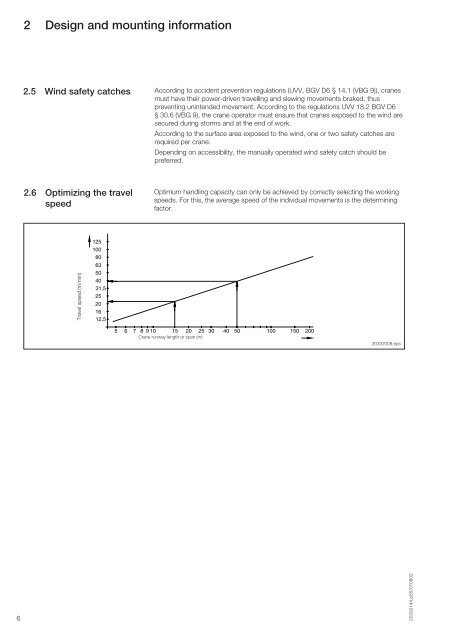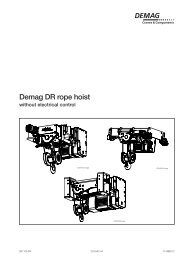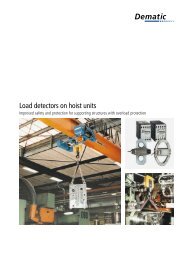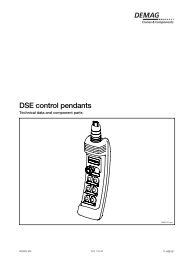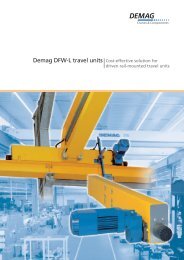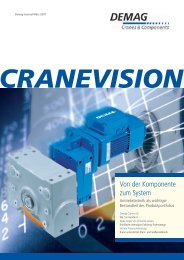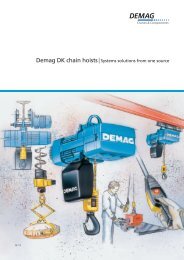DFW-L-E end carriages - Demag Cranes & Components
DFW-L-E end carriages - Demag Cranes & Components
DFW-L-E end carriages - Demag Cranes & Components
You also want an ePaper? Increase the reach of your titles
YUMPU automatically turns print PDFs into web optimized ePapers that Google loves.
2 Design and mounting information<br />
2.5 Wind safety catches<br />
2.6 Optimizing the travel<br />
speed<br />
Travel speed (m/min)<br />
125<br />
100<br />
80<br />
63<br />
50<br />
40<br />
31,5<br />
25<br />
20<br />
16<br />
12,5<br />
5<br />
According to accident prevention regulations (UVV, BGV D6 § 14.1 (VBG 9)), cranes<br />
must have their power-driven travelling and slewing movements braked, thus<br />
preventing unint<strong>end</strong>ed movement. According to the regulations UVV 18.2 BGV D6<br />
§ 30.6 (VBG 9), the crane operator must ensure that cranes exposed to the wind are<br />
secured during storms and at the <strong>end</strong> of work.<br />
According to the surface area exposed to the wind, one or two safety catches are<br />
required per crane.<br />
Dep<strong>end</strong>ing on accessibility, the manually operated wind safety catch should be<br />
preferred.<br />
Optimum handling capacity can only be achieved by correctly selecting the working<br />
speeds. For this, the average speed of the individual movements is the determining<br />
factor.<br />
6 7 8 9 10 15 20 25 30<br />
Crane runway length or span (m)<br />
20332008.eps<br />
6 20332144.p65/010802<br />
40<br />
50<br />
100<br />
150<br />
200


